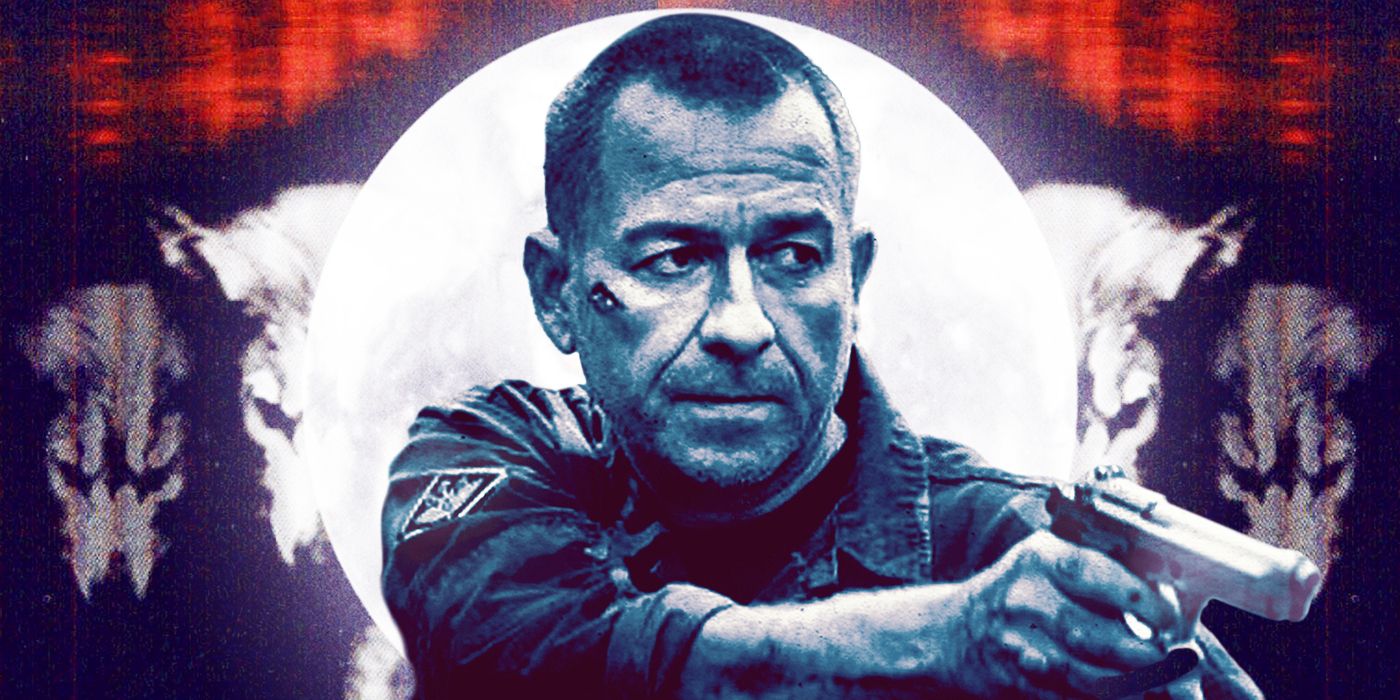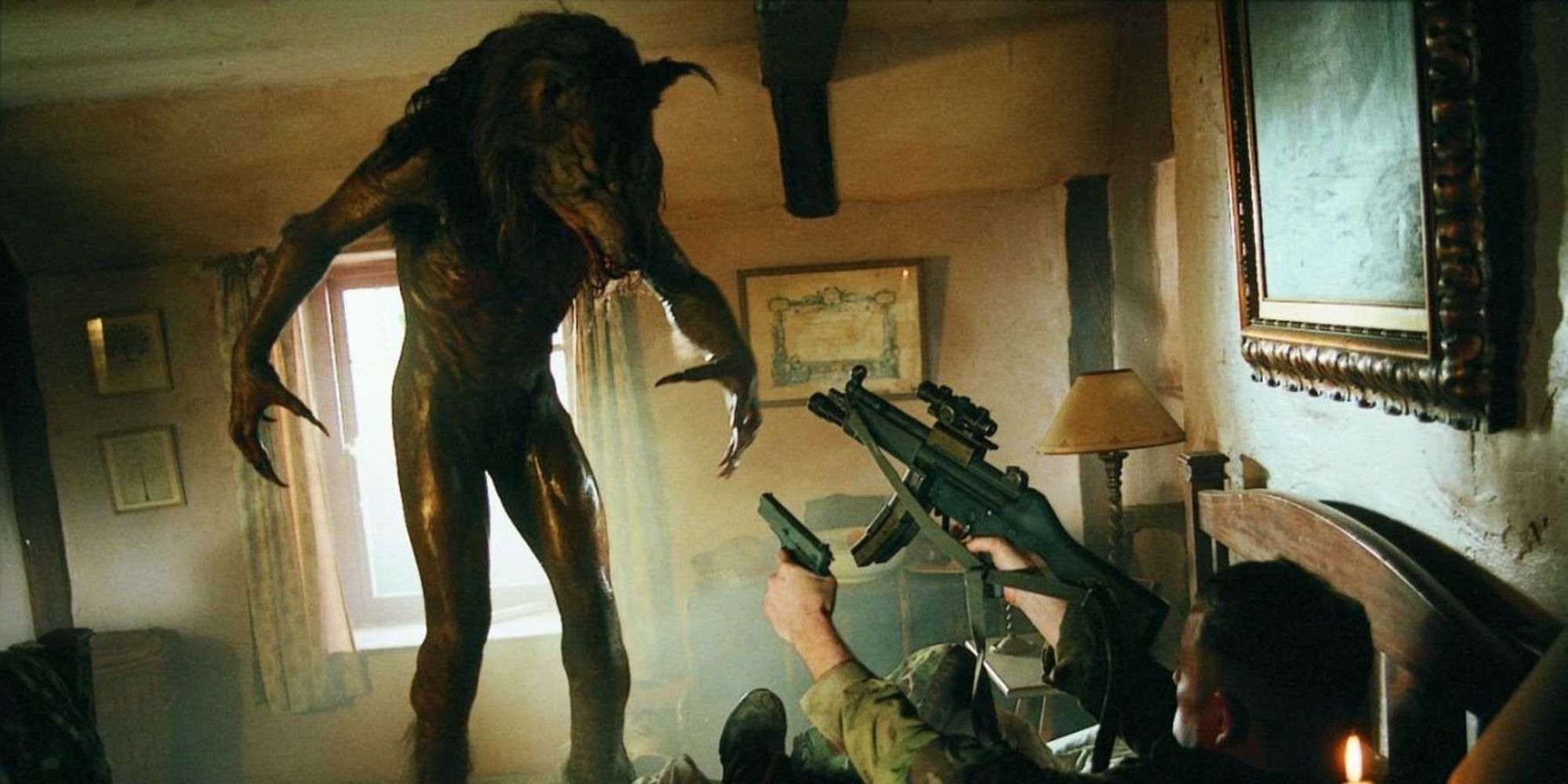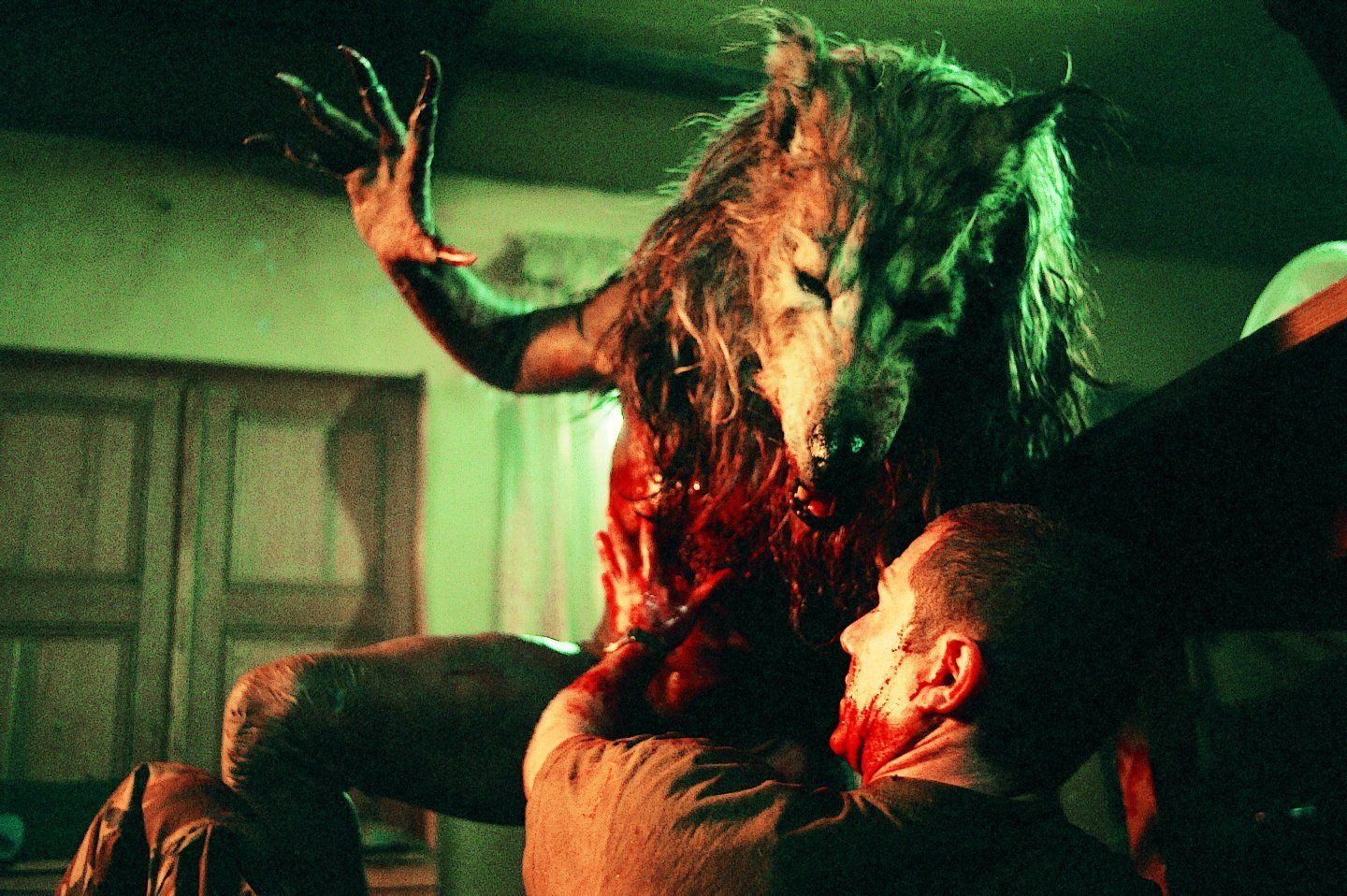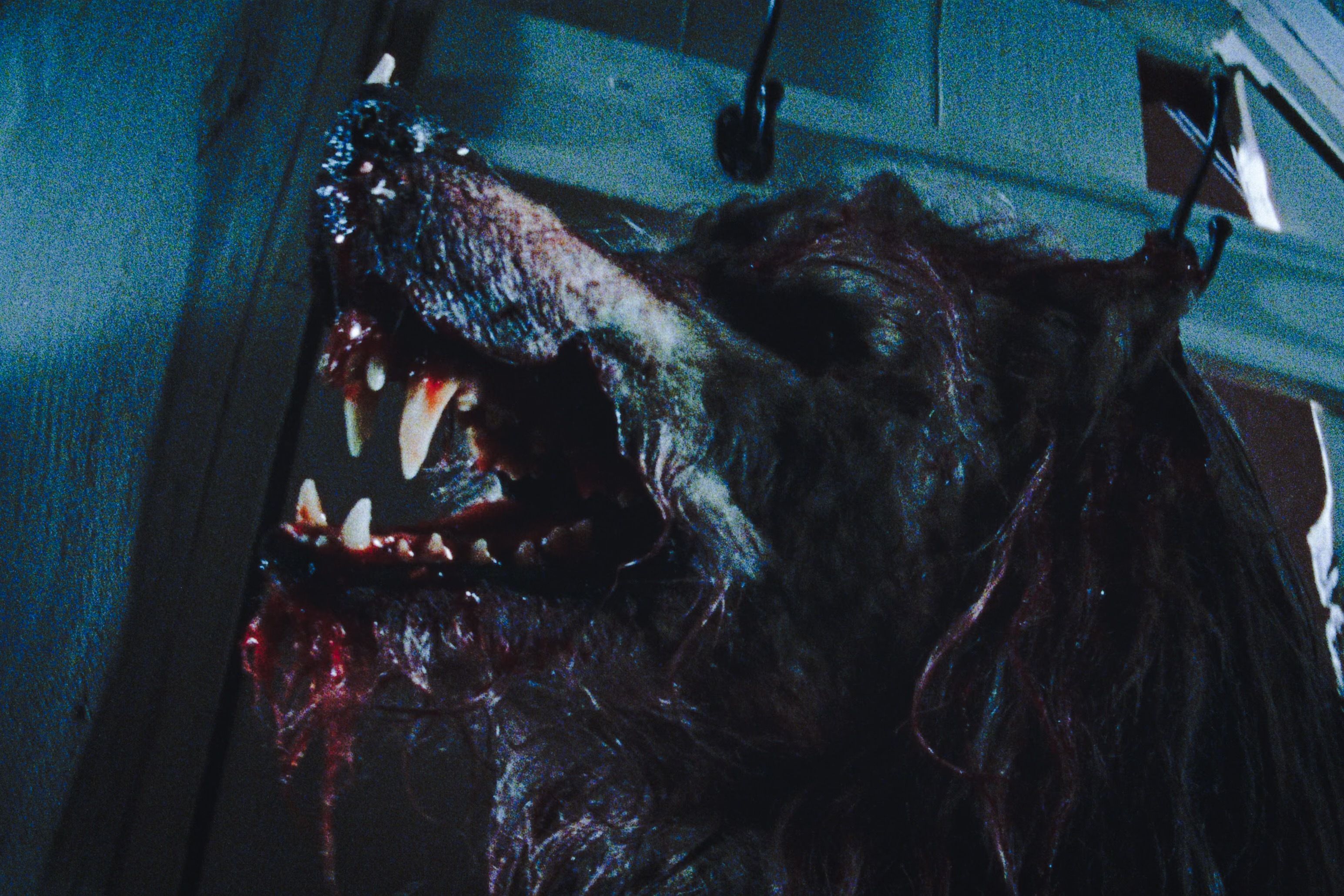We all know the story of the werewolf. Under the full moon, someone transforms into a hulking wolf-like beast with the desire to hunt and kill its prey. Said person also suffers from a deep melancholy over their condition, lamenting over their fate. And usually, they end up dead - whether it's by their own hands or by the hands of their friends or foes. This formula has fueled everything from the classic An American Werewolf in London to Marvel Studios' Halloween special Werewolf by Night. But it was thrown out the window for Neil Marshall's directorial debut, Dog Soldiers.
True to its name, Dog Soldiers ends up pitting a group of soldiers against a pack of werewolves. Said soldiers just happen to be on a training exercise in the woods when they discover that the SAS unit they were supposed to engage in a mock battle with has been torn to shreds. The sole survivor, Captain Ryan (Liam Cunningham), is in a state of shock and can only hint at what attacked his men. But soon the werewolves attack, forcing the training squad and a civilian named Megan (Emma Cleasby) to hide out in a nearby house.
From the very start of Dog Soldiers' runtime, Marshall is uninterested in humanizing his beasts. They seem to take a perverse glee in killing - ripping apart their prey with little hesitation. And unlike most werewolf films, where the werewolf in question is little more than a raging beast, these werewolves possess intelligence. They know how to corner their prey and when to wait for the right opportunity to strike. Bob Keen, the makeup artist behind horror classics such as Candyman and Hellraiser, put a great deal of work into making the werewolves look as inhuman as possible. The beasts are extremely tall, with lean muscular bodies and ominous golden eyes - it's enough to strike fear into even the most hardened of hearts. But perhaps the most frightening part comes from the werewolves' near-immortality. They shrug off bullets, knives, and other fatal wounds: the only way to kill one is to use silver weaponry or fire.
In fact, a large part of why Marshall made Dog Soldiers is that he wanted to avoid the specific tropes that went hand in hand with a werewolf story. "I didn’t want to do the classic curse of the werewolf story, which is essentially what all werewolf films had been up until that point," he said in an interview. "I wanted to do essentially Aliens with werewolves, in which they’re just a ferocious enemy and really difficult to kill, and who they are as people is irrelevant." Marshall was true to his word; it's revealed that the cabin the soldiers have holed themselves up in actually belongs to the werewolves. Even worse, novice soldier Cooper (Kevin McKidd) stumbles upon the basement where the werewolves keep the corpses of their victims hanging on meat hooks.
Marshall chooses to save the more emotional moments for the group of soldiers. Cooper and his fellow squad mates Spoon (Darren Morfitt), Joe (Chris Robson), Terry (Leslie Simpson), and Bruce (Thomas Lockyer) are as close as brothers. They swap jokes and butt heads, but when push comes to shove they're willing to lay down their lives for each other. And their commanding officer, Sergeant Harry G. Wells (Sean Pertwee) acts as a father to his men. He barks out orders that may seem harsh at first, but are intended to keep them alive: stay close together, keep a clean perimeter, and to leave him behind when a werewolf attacks him. It's a testament to the squad's dedication that they ignore his orders and patch him up.
In contrast, Ryan is an outright monster in more ways than one. When he's first introduced, he tells Cooper to shoot a dog that had accompanied him during basic training - and when Cooper refuses, he does the deed himself. He's also revealed to have been hunting the werewolves, and intended to use Wells' men as bait to trap it. Eventually, it's revealed that Ryan is transforming into a werewolf himself, and he joins the other lycanthropes in attacking the soldiers. This leads to an extremely satisfying moment where Cooper engages in hand-to-hand combat with the wolfed-out Ryan and blows his brains out.
Wells, on the other hand, remains noble to the end. He keeps his men's spirits alive, even when he confesses that he's scared he'll never see his wife again. He also has no patience for Ryan, telling the soldier: "Now you just shut up like a good gentleman, you are scaring my lads." And when he starts to transform into a werewolf, he tells Cooper to get out and tell others what happened. This leads to one of the film's best scenes where the werewolves corner Wells and he blows them up by pulling a pin out of a grenade and smashing the pilot light on the stove. As heroic sacrifices go, it's definitely top-tier.
In fact, a big draw of the film is that it's packed from beginning to end with high-octane action sequences. Bullets scatter across the ground as the soldiers fire at the werewolves. Multiple explosions happen, including a truck being blown up. And in the most metal moment, Cooper uses a sword to impale the werewolfed Ryan. These scenes are proof that sometimes a simple pitch and good character work is enough to carry a story. And Marshall would take a similar approach to his following work. The Descent features a group of girls fighting off a cave of hellish creatures, Doomsday has medieval knights in a plague ridding apocalypse, and Centurion has Michael Fassbender as a gladiator. Marshall's penchant for genre-bending action epics has even followed him to TV, where he's directed episodes of Game of Thrones, Westworld, and the short-lived Constantine. Work on a sequel has hit multiple roadblocks over the years, but Dog Soldiers remains a singularly compelling entry in the werewolf genre.




